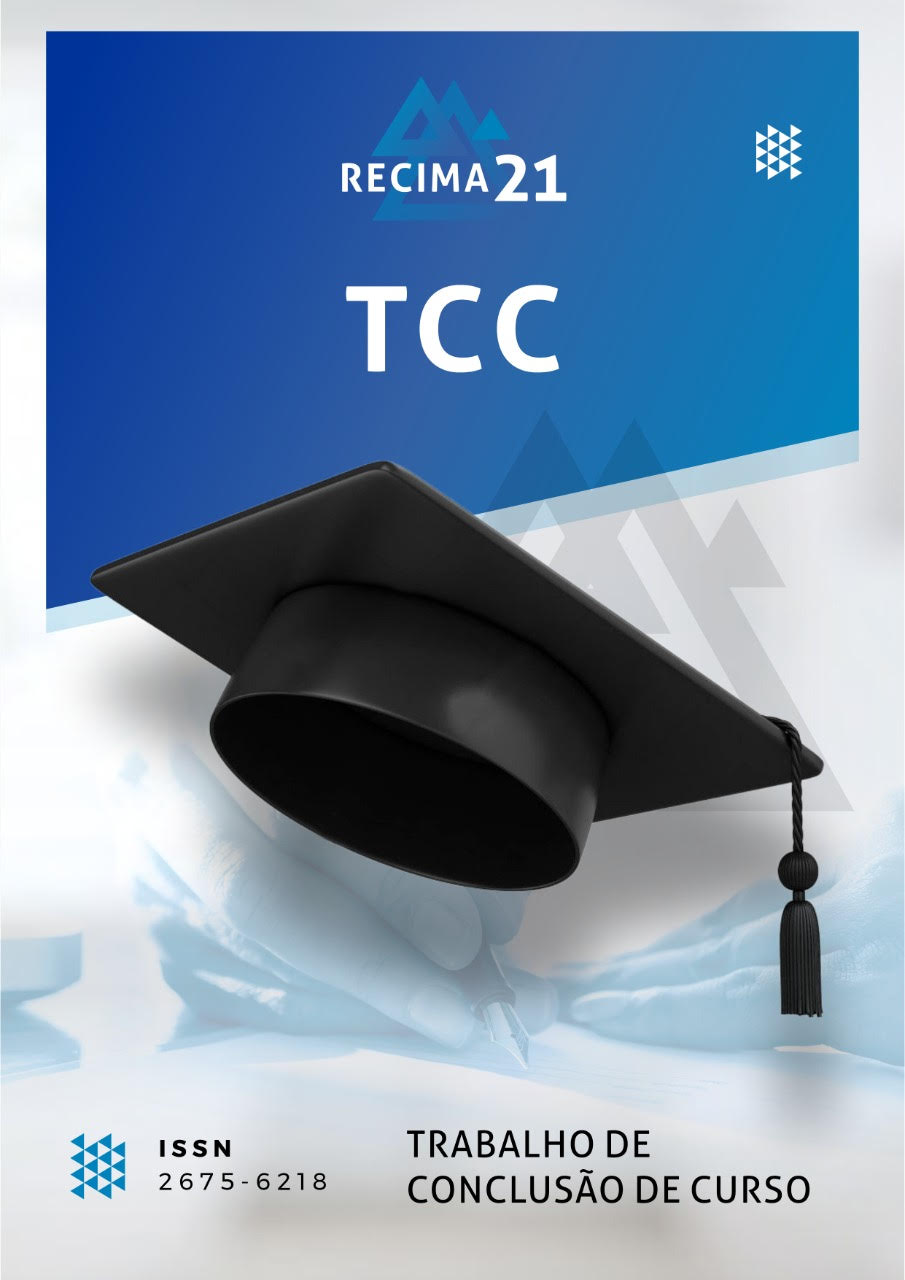USE OF CANNABIDIOL IN SCIATIC COMPRESSION NEUROPATHY: EXPERIMENTAL STUDY
DOI:
https://doi.org/10.47820/recima21.v5i1.5259Keywords:
Cannabidiol, Sciatic Neuropathy, Wistar RatsAbstract
Introduction: Peripheral neuropathy comprises a wide spectrum of syndromes, characterized by injuries to one or more peripheral nerves, and may be related to metabolic, degenerative, infectious diseases and physical trauma. The management of symptoms remains a major challenge, considering that in many situations, the adverse effects of drugs outweigh their advantages, impacting the quality of life of patients. Aims: To evaluate the effectiveness of cannabidiol in sensorimotor functional recovery resulting from crushing the sciatic nerve. Methods: After CEUA approval, 15 female Wistar rats (Rattus norvegicus), with a mean age of three months and weight of 250 ± 20 g, from the Science Facility were used. Animal from UNIFESO. The animals were divided into: Control Group (CG, n = 5); no surgical procedure; Trauma Group (TGR, n = 5); crushing of the sciatic nerve of the left abdominal limb, followed by surgical synthesis; Cannabidiol Group (CDBG, n = 5); procedure like the previous one, followed by oral administration of 60 mg/kg/day of cannabidiol for seven days. All groups were submitted to locomotion tests, with assessment of the degree of lameness by the modified Muzzi Score, and histological analysis of the sciatic nerve. Results: When comparing the GCDB with the GTR, the lameness score was significantly higher (30.43%) in the treated animals (P < 0.05). Histological findings also demonstrated a greater precocity of the regenerative process in GCBD. Conclusions: The results were promising, considering the pathophysiological complexity of peripheral neuropathy and the need for more robust complementary studies with greater analytical rigor.
Downloads
References
Machado L dos SR, Assis NML, Rodrigues JLG. Potencial analgésico do canabidiol no tratamento da dor crônica: uma revisão integrativa. Revista Artigos.Com. 2022;34:e10352. Disponível em: https://acervomais.com.br/index.php/artigos/article/view/10352
Kraychete DC, Sakata RK. Neuropatia Periférica Dolorosa. Revista Brasileira de Anestesiologia; 2011. Disponível em: https://www.scielo.br/j/rba/a/SnQgHmxmvPS8XdF3G7BKc3P/?format=pdf&lang=pt
Xu DH, Cullen BD, Tang M, Fang Y. The Effectiveness of Topical Cannabidiol Oil in Symptomatic Relief of Peripheral Neuropathy of the Lower Extremities. Curr Pharm Biotechnol. 2020;21(5):390-402. doi: 10.2174/1389201020666191202111534. DOI: https://doi.org/10.2174/1389201020666191202111534
Bridge PM, Ball DJ, Mackinnon SE, Nakao Y, Brandt K, Hunter DA, Hertl C. Nerve crush injuries--a model for axonotmesis. Exp Neurol. 1994 Jun;127(2):284-90. doi: 10.1006/exnr.1994.1104. DOI: https://doi.org/10.1006/exnr.1994.1104
Mackinnon SE, Hudson AR, Hunter DA. Histologic assessment of nerve regeneration in the rat. Plast Reconstr Surg. 1985 Mar;75(3):384-8. doi: 10.1097/00006534-198503000-00014. DOI: https://doi.org/10.1097/00006534-198503000-00014
Mendonça AC. Estudo da regeneração do nervo ciático em ratos submetidos à estimulação elétrica após lesão por esmagamento. [Dissertação de Mestrado]. Escola de Engenharia de São Carlos. Faculdade de Medicina de Ribeirão Preto. Instituto de Química de São Carlos. Bioengenharia. Universidade de São Paulo (USP). 2000. 68p.
Dahlin LB. Aspects on pathophysiology of nerve entrapments and nerve compression injuries. Neurosurg Clin N Am. 1991 Jan;2(1):21-9. PMID: 1668263. DOI: https://doi.org/10.1016/S1042-3680(18)30754-X
Muzzi LAP, Rezende CMF, Muzzi RAL, Borges NF. Ruptura do Ligamento cruzado cranial em cães: fisiopatologia e diagnóstico. Clin Vet. 2003;46(1):32-42.
Fernández-Ruiz J, Moro MA, Martínez-Orgado J. Cannabinoids in Neurodegenerative Disorders and Stroke/Brain Trauma: From Preclinical Models to Clinical Applications. Neurotherapeutics. 2015 Oct;12(4):793-806. doi: 10.1007/s13311-015-0381-7. DOI: https://doi.org/10.1007/s13311-015-0381-7
Scuderi C, Filippis DD, Iuvone T, Blasio A, Steardo A, Esposito G. Cannabidiol in medicine: a review of its therapeutic potential in CNS disorders. Phytother Res. 2009 May;23(5):597-602. doi: 10.1002/ptr.2625. DOI: https://doi.org/10.1002/ptr.2625
Giacoppo S, Soundara Rajan T, Galuppo M, Pollastro F, Grassi G, Bramanti P, Mazzon E. Purified Cannabidiol, the main non-psychotropic component of Cannabis sativa, alone, counteracts neuronal apoptosis in experimental multiple sclerosis. Eur Rev Med Pharmacol Sci. 2015 Dec;19(24):4906-19. PMID: 26744883.
Russo EB, Burnett A, Hall B, Parker KK. Agonistic properties of cannabidiol at 5-HT1a receptors. Neurochem Res. 2005 Aug;30(8):1037-43. doi: 10.1007/s11064-005-6978-1. DOI: https://doi.org/10.1007/s11064-005-6978-1
Mecha M, Feliú A, Iñigo PM, Mestre L, Carrillo-Salinas FJ, Guaza C. Cannabidiol provides long-lasting protection against the deleterious effects of inflammation in a viral model of multiple sclerosis: a role for A2A receptors. Neurobiol Dis. 2013 Nov; 59:141-50. doi: 10.1016/j.nbd.2013.06.016. DOI: https://doi.org/10.1016/j.nbd.2013.06.016
Pertwee RG. Pharmacological actions of cannabinoids. Handb Exp Pharmacol. 2005;(168):1-51. doi: 10.1007/3-540-26573-2_1. DOI: https://doi.org/10.1007/3-540-26573-2_1
Richner M, Ulrichsen M, Elmegaard SL, Dieu R, Pallesen LT, Vaegter CB. Peripheral nerve injury modulates neurotrophin signaling in the peripheral and central nervous system. Mol Neurobiol. 2014 Dec;50(3):945-70. doi: 10.1007/s12035-014-8706-9. DOI: https://doi.org/10.1007/s12035-014-8706-9
Mori MA, Meyer E, Soares LM, Milani H, Guimarães FS, de Oliveira RMW. Cannabidiol reduces neuroinflammation and promotes neuroplasticity and functional recovery after brain ischemia. Prog Neuropsychopharmacol Biol Psychiatry. 2017 Apr 3;75:94-105. doi: 10.1016/j.pnpbp.2016.11.005. DOI: https://doi.org/10.1016/j.pnpbp.2016.11.005
Ceprián M, Jiménez-Sánchez L, Vargas C, Barata L, Hind W, Martínez-Orgado J. Cannabidiol reduces brain damage and improves functional recovery in a neonatal rat model of arterial ischemic stroke. Neuropharmacology. 2017 Apr;116:151-159. doi: 10.1016/j.neuropharm.2016.12.017. DOI: https://doi.org/10.1016/j.neuropharm.2016.12.017
Harvey BS, Ohlsson KS, Mååg JL, Musgrave IF, Smid SD. "Contrasting protective effects of cannabinoids against oxidative stress and amyloid-beta evoked neurotoxicity in vitro."Neurotoxicology;33(1):138-46. doi: 10.1016/j.neuro.2011.12.015. DOI: https://doi.org/10.1016/j.neuro.2011.12.015
Pazos MR, Cinquina V, Gómez A, Layunta R, Santos M, Fernández-Ruiz J, Martínez-Orgado J. Cannabidiol administration after hypoxia-ischemia to newborn rats reduces long-term brain injury and restores neurobehavioral function. Neuropharmacology. 2012 Oct;63(5):776-83. doi: 10.1016/j.neuropharm.2012.05.034. DOI: https://doi.org/10.1016/j.neuropharm.2012.05.034
Schiavon AP, Soares LM, Bonato JM, Milani H, Guimarães FS, Weffort de Oliveira RM. Protective effects of cannabidiol against hippocampal cell death and cognitive impairment induced by bilateral common carotid artery occlusion in mice. Neurotox Res. 2014 Nov;26(4):307-16. doi: 10.1007/s12640-014-9457-0. DOI: https://doi.org/10.1007/s12640-014-9457-0
Campos AC, Brant F, Miranda AS, Machado FS, Teixeira AL. Cannabidiol increases survival and promotes rescue of cognitive function in a murine model of cerebral malaria. Neuroscience. 2015 Mar 19;289:166-80. doi: 10.1016/j.neuroscience.2014.12.051. DOI: https://doi.org/10.1016/j.neuroscience.2014.12.051
Faulkner JR, Herrmann JE, Woo MJ, Tansey KE, Doan NB, Sofroniew MV. Reactive astrocytes protect tissue and preserve function after spinal cord injury. J Neurosci. 2004 Mar 3;24(9):2143-55. doi: 10.1523/JNEUROSCI.3547-03.2004. DOI: https://doi.org/10.1523/JNEUROSCI.3547-03.2004
Lacroix S, Hamilton LK, Vaugeois A, Beaudoin S, Breault-Dugas C, Pineau I, Lévesque SA, Grégoire CA, Fernandes KJ. Central canal ependymal cells proliferate extensively in response to traumatic spinal cord injury but not demyelinating lesions. PLoS One. 2014 Jan 27;9(1):e85916. doi: 10.1371/journal.pone.0085916. DOI: https://doi.org/10.1371/journal.pone.0085916
Adhikary S, Li H, Heller J, Skarica M, Zhang M, Ganea D, Tuma RF. Modulation of inflammatory responses by a cannabinoid-2-selective agonist after spinal cord injury. J Neurotrauma. 2011 Dec;28(12):2417-27. doi: 10.1089/neu.2011.1853. DOI: https://doi.org/10.1089/neu.2011.1853
Downloads
Published
How to Cite
Issue
Section
Categories
License
Copyright (c) 2024 RECIMA21 - Revista Científica Multidisciplinar - ISSN 2675-6218

This work is licensed under a Creative Commons Attribution 4.0 International License.
Os direitos autorais dos artigos/resenhas/TCCs publicados pertecem à revista RECIMA21, e seguem o padrão Creative Commons (CC BY 4.0), permitindo a cópia ou reprodução, desde que cite a fonte e respeite os direitos dos autores e contenham menção aos mesmos nos créditos. Toda e qualquer obra publicada na revista, seu conteúdo é de responsabilidade dos autores, cabendo a RECIMA21 apenas ser o veículo de divulgação, seguindo os padrões nacionais e internacionais de publicação.

 Clique para ver detalhes
Clique para ver detalhes 











